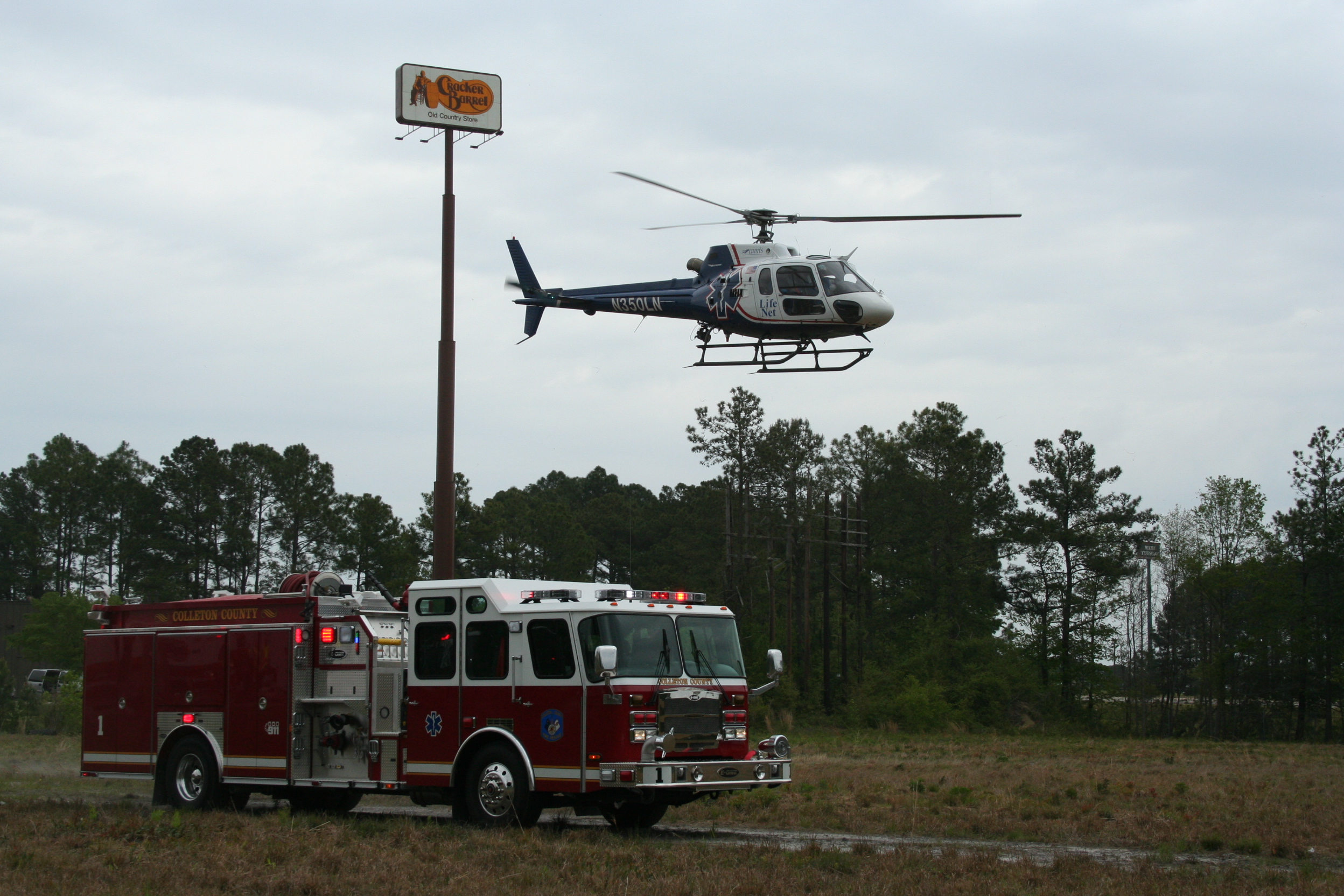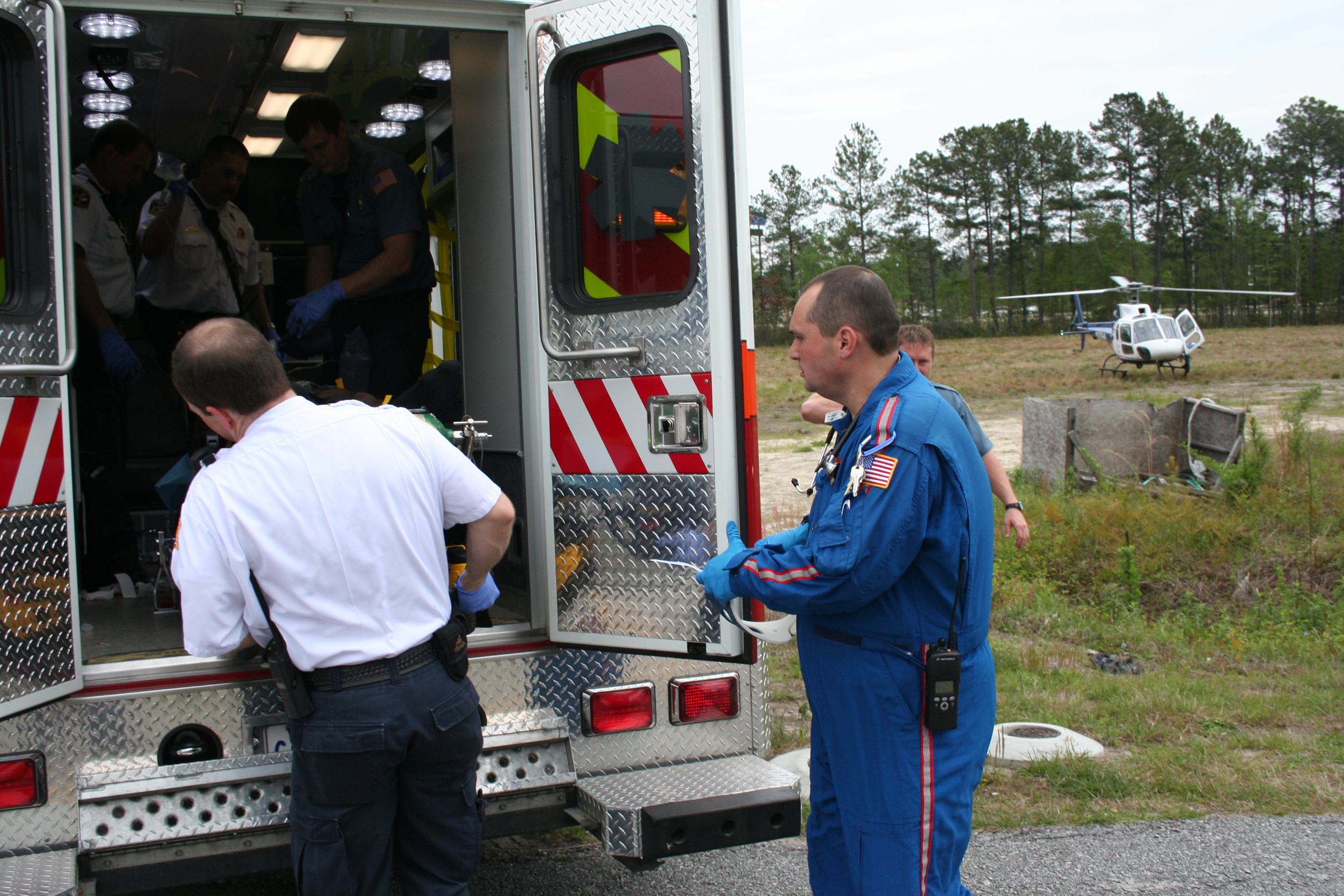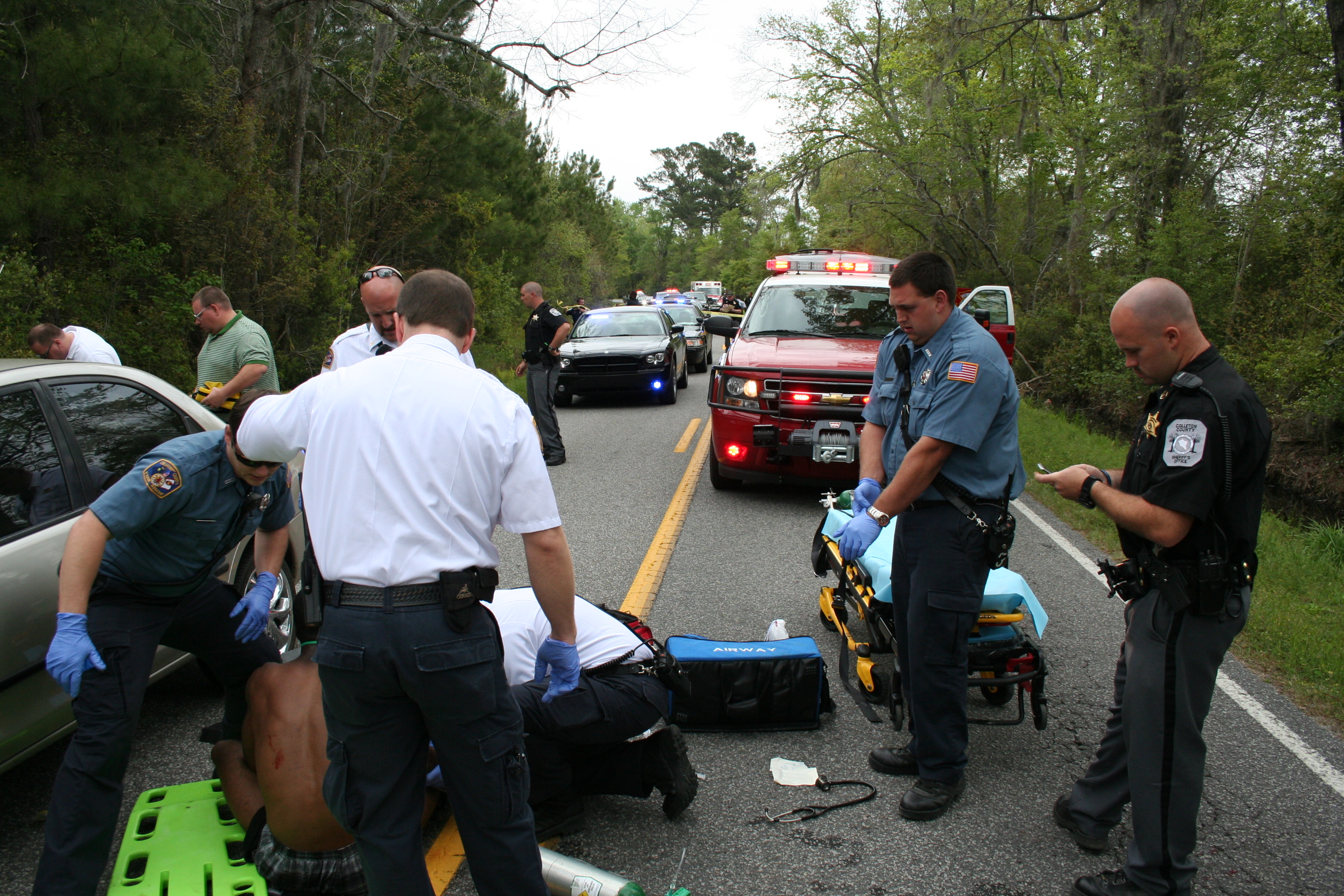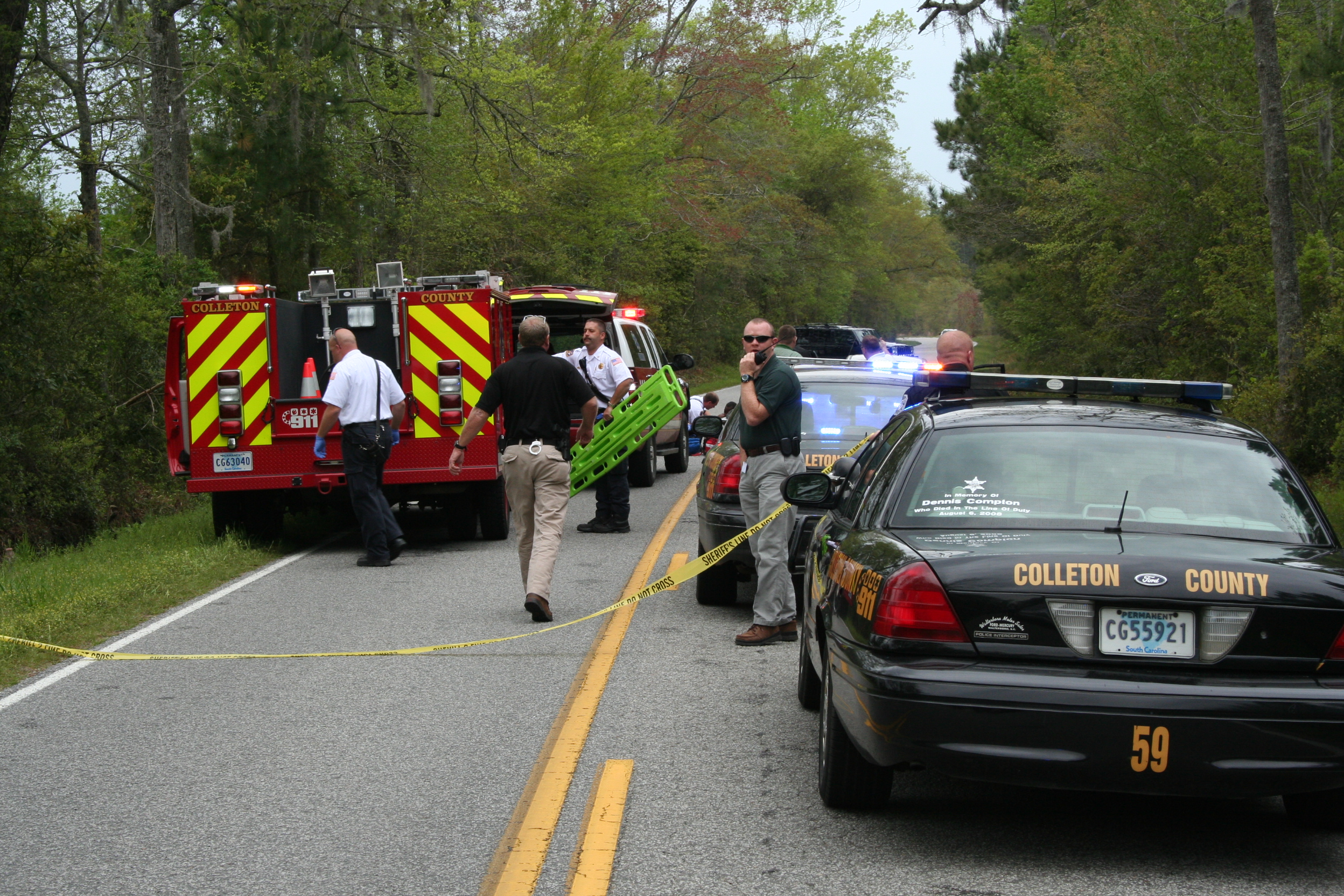
Stations 1 and 27 responded to a shooting incident on an isolated stretch of Cane Branch Road Monday 13-April at 1220. The midday shooting was the third such incident to occur in the last week in the county. The first two resulted in fatalities. The incident location was approximately one mile south of Sniders Hwy. Several passing motorists reported a man lying in the roadway, some stating the man had been shot. Two Fire-Rescue Officers in an ALS First Response Unit responded from Headquarters and were the first to arrive, followed shortly by Battalion 1, also equipped with ALS equipment. They found the victim in the roadway gasping for air. He had received what appeared to be multiple, large caliber gunshot wounds, one through the neck and possibly two or more to the upper chest. The bullets were later determined to be 45 caliber in size. He was in dire straits and near death, not being able to exchange air. The victim was already cyanotic from the shoulders up and very combative as he struggled to breathe. It was apparent that no large blood vessels were hit by the bullet, due to the lack of swelling and minimal blood loss, but his trachea was severely damaged. Medic 27 and other personnel arrived within minutes to assist. Firefighter-Paramedics knew he wouldn’t make it to a hospital without

Five County Firefighter-Paramedics worked diligently to calm the man so they could establish an IV line to administer medications. They knew he would have to be incapacitated so they could intubate him and allow him to breathe. Most Colleton County Firefighter-Paramedics are trained to perform RSI (Rapid Sequence Intubation). Crews were able to hold him still enough to get the IV established and rendered him unconscious with a combination of three medications, paralyzing the patient. Once unconscious, the intubation was fairly easy and his condition greatly improved as fire personnel and the flight crew ventilated the man. After his condition was stabilized in the ambulance, additional medications were administered to keep him unconscious. He was quickly transferred to the helicopter and flown to the Trauma Center at MUSC where he underwent emergency surgery shortly after arrival.

